Umbria has been proclaimed il cuor verde d'Italia - the green heart of Italy. Located in the geographic center of the Italian peninsula, it is the only region in the country that does not posses either a coastline or border with another country. The cuisine of Umbria is beautifully simple and plain, replete with fresh local seasonal produce, such as such as peas, tomatoes, potatoes, onions, beans, spinach and eggplant.
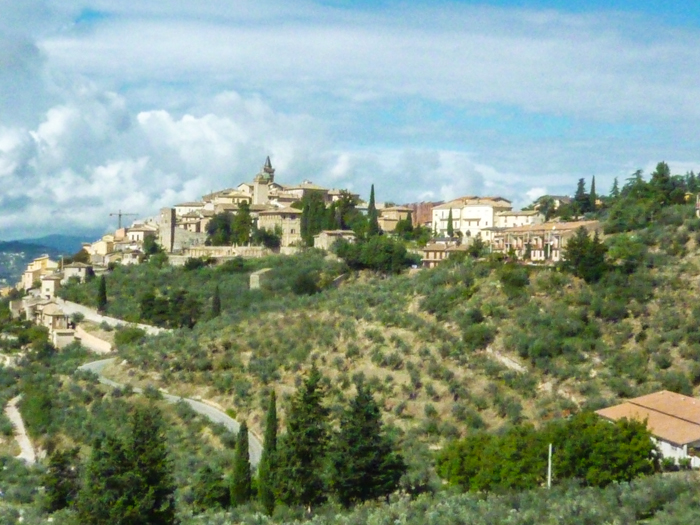
As in the rest of Italy, seasonality plays a huge role in Umbrian cuisine, as the poorer families in the region forage for what they can find. In the spring, locals will park their cars by the side of the road and head in to a favorite spot in the woods to find wild asparagus. Summer brings plenty of delicious, juicy blackberries. Fall brings wild mushrooms to the table - all of these you can find for sale at the local markets, if foraging yourself seems a bit daunting!
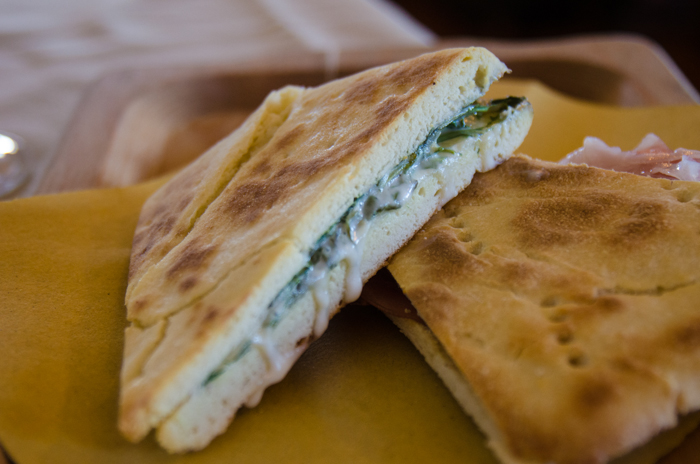
While landlocked, fertile farmland abounds along the many tributaries of the Tiber that flow through Umbria. Grains like wheat and farro and pearl barley are cultivated, and find their way into breads, soups and salads. One of the most popular bread in Umbria is torta al testo, a flatbread cooked on a round metal or stone griddle, called a testo. It can be served stuffed with grilled sausages, prosciutto, cooked greens, or cheese, or simply plain, as a bread to accompany a meal.
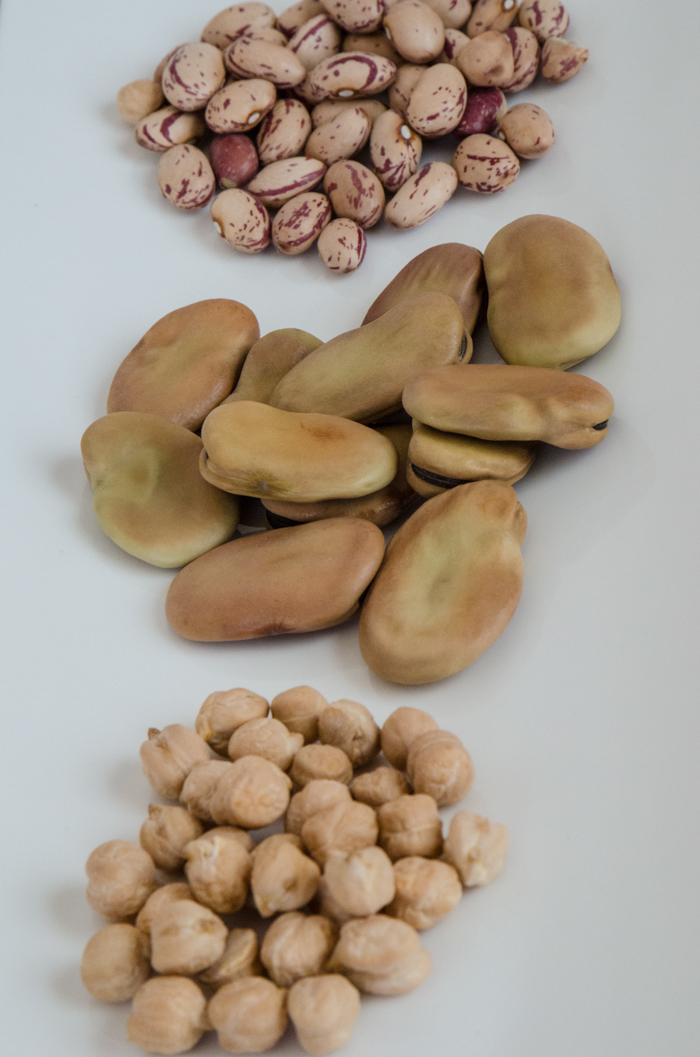
Umbria is particularly well known for its beans and lentils, which are dried and appear on their table year round. Some very special heirloom varieties include Roveja di Civita di Cascia, small wild peas that grow high on the slopes of the Sibillini mountains, and the Lake Trasimeno bean, a tiny bean about the size of a grain of rice, which are eaten both dried and fresh. Also from Lake Trasimeno is the fagiolino, a eyeless type of black-eyed pea, Cave di Foligno’s rare variety of navy bean, the fagiolo or the earthy cicerchie, a type of chickpea. The town of Castelluccio produces some wonderful tiny lentils.
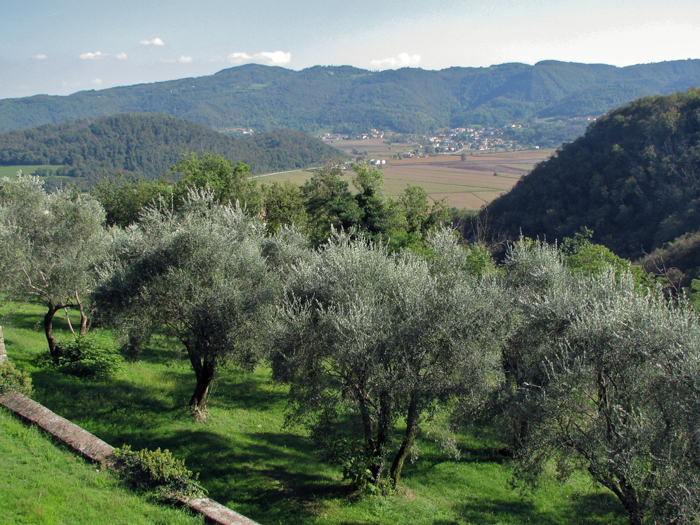
Late fall brings the olive harvest to the hillsides of Umbria. Olives are hand-picked, by workers on wooden ladders, and dropped into baskets or nets spread on the ground under the trees. Locals bring their olives to olive oil mills, where the olives are pressed, the oil filtered and bottled. A drizzle of olive oil will finish soups, salads, and meats, with Umbrians very particular about what type of olive oil accompanies a dish. Umbria boasts no less than five different DOP denomination varieties: Colli Orvietani, Colli Martani, Colli Amerini, Colli di Assisi-Spoleto, Colli del Trasimeno. Umbria’s largest production center for olive oil is Trevi, surrounded by mountainsides covered with olive trees.
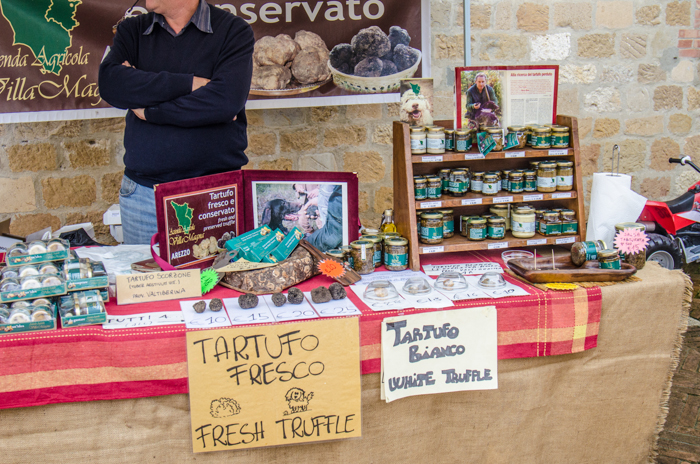
Fall also brings the most luxurious of Umbrian specialities - the truffle. Both black and white truffles are found in the region. These misshapen, unassuming fungi are found all year round. White truffles, rarer and more aromatic, are more highly prized than the black summer truffles. Close to half (45%) of all black truffles produced in Italy hail from the area around Valnerina. There are three main truffle fairs in Umbria each winter, in Norcia, Valtopina, and Città di Castello. You will find truffles grated over pasta, flavoring pates, sauces, and frittatas.
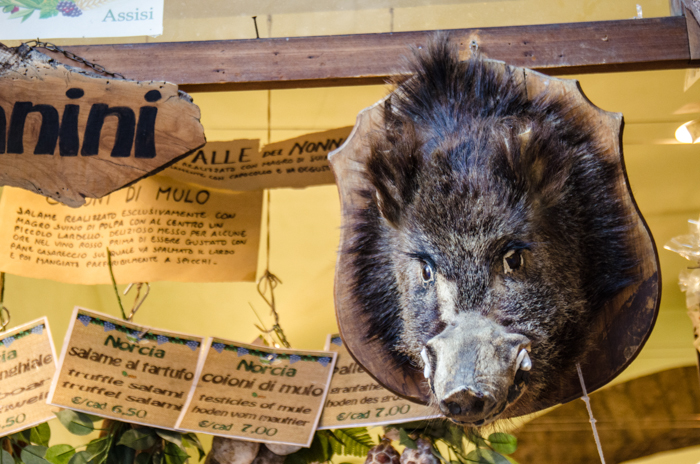
Over the centuries, small Umbrian family farms located on the hillsides favored the raising of pigs over beef. To preserve the meat for consumption year round, the Umbrians became masters of curing meats into a wide array of salame, prosciutto, pancetta, and dried sausages. The ancient town of Norcia is the center for the production of cured meats in the region, so much so that the term norcino in Italian indicates all types of preserved meats. Try the distinctive Prosciutto di Norcia, with it’s DOP quality designation, made from pigs that have been fed a diet of acorns. There is capocollo, a spicy local sausage flavored with garlic and peppers, and ciauscolo, made from pork shoulder, belly and pork fat all minced three times and ideal for spreading over bread. Mazzafegato is made from the leftovers of a pig after other cured meats have been prepared, where the fegato (liver) and any other leftover meat is coarsely minced and cured with salt, pepper, small amounts of garlic, lemon and/or orange peel and, in particular, fennel flowers
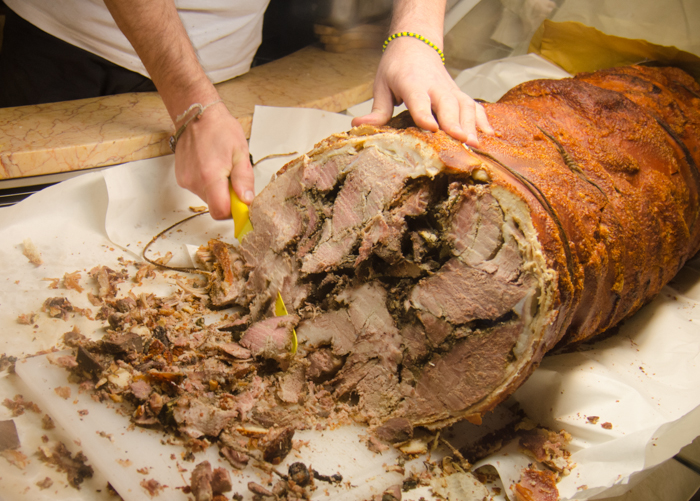
No visit to an Umbrian market is complete without a visit to a porchettai - a food truck serving the wonderful roast pork sandwiches, porchetta. This pork is made from an entire pig which has been deboned, stuffed with garlic and herbs such as rosemary and fennel, then spit roasted over a wood fire.
In spite of it’s landlocked location, fish does appear on the tables of Umbria, freshwater species from Lake Trasimino. Tench, carp, pike, perch, and eel are just a few of the varieties of fish you can sample during your visit.
Umbria also has a long history of chocolate production. The Perugina chocolate company was founded in 1907 in the city of Perugia. It rose to international fame with Baci, made with dark chocolate and hazelnuts. Initially named cazzotti, Baci were renamed by the dissolute Italian poet Gabriele D’Annunzio. You can visit the Perugina museum, devoted to the history of the company, and view the original machinery used to produce the chocolates. In 1988 Perugina was incorporated into the Swiss multinational Nestlé.
In Italy, the Traditional Speciality Guaranteed (TSG) quality designation refers to an agricultural product or foodstuff produced either using traditional raw materials or characterized by a traditional composition or a mode of production and/or processing reflecting a traditional type of production and/or processing.
In Umbria, there are 70 TSG products. This list has been assembled by the Strade dei Sapori in Umbria committee.
Fresh meat (and offal) and preparation thereof:
Capocollo (salted and smoked pork meat taken from the neck)
Coglioni di mulo
Coppa di testa (seasoned pork shoulder)
Corallina or salame umbro (Umbrian salami)
Guanciale or barbozzo (a sort of Italian "bacon" made from the pig's cheek)
Lombetto
Mazzafegati
Porchetta (oven or spit roasted suckling pig flavoured with seasonings)
Prosciutto nostrano (ham)
Salame di Norcia (Norcia salami)
Salsicce (sausages)
Sanguinaccio (black pudding)
Ventresca
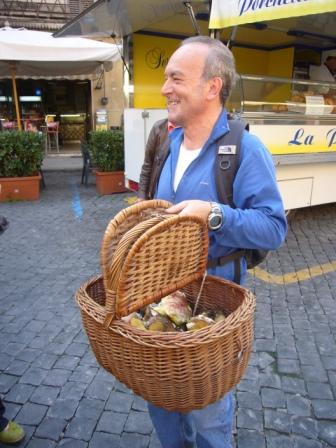
Condiments:
Pasta di olive (olive paste)
Paté di interiora di pollo (chicken entrails paté)
Cheeses:
Caciotta (caciotta and truffle caciotta)
Formaggio (farcito e misto)
Pecorino (di Norcia, di Norcia del pastore, stagionato in fossa/grotta, stagionato in botte, umbro)
Raviggiolo
Ricotta salata (salt ricotta)
Natural or processed plants products:
Broccoletti del lago (small broccoli of the lake)
Cicerchia
Cipolla di Cannara (Cannara onion)
Fagiolina del lago (Lake Trasimeno Bean)
Fagiolo di Cave (Cave Bean)
Farro (farro and farro di Monteleone) (spelt)
Lenticchie (lentils)
Marrone (sweet chestnut)
Patata rossa di Colfiorito (Colfiorito red potato)
Sedano nero di Trevi (Trevi black celery)
Tartufo bianco pregiato (fine white truffle)
Tartufo nero pregiato (fine black truffle)
Zafferano di Cascia (Cascia saffron)
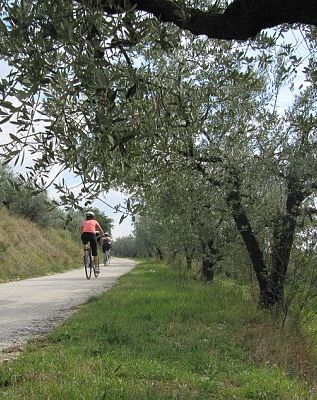
Fresh pasta, baked goods, biscuits, pastries and confectionery:
Attorta
Bringoli
Brustengolo
Castagnole
Ciaramicola
Ciriole
Cresciole di ciccioli
Crescionda
Fave dei morti
Mostaccioli
Nociata
Pammelati
Pampepato
Pan mostato
Pan nociato
Pane di Strettura
Passatelli
Pici
Pinoccate
Pinolate
Rocciata
Schiacciata al formaggio
Stinchetti
Strangozzi
Strufoli
Torciglione
Torcolo di S. Costanzo
Torta al formaggio o di Pasqua
Torta al testo
Tozzetti
Umbricelli
Fish, mollusks and shellfish dishes:
Anguilla (eel)
Carpa (carp)
Latterino (atherine)
Luccio (pike)
Persico reale (real perch)
Tinca (tench)


